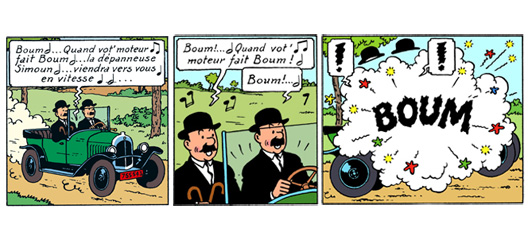Fr : version française / En: english version
Boom!
Unlike the steam engine, combustion in the internal combustion engine takes place in the piston cylinder. Derived from Huygens's gun powder engine (1690), its most high-profile application is, of course, the automobile.
The Goddess Citroen
I think that cars today are almost the exact equivalent of the great Gothic cathedrals: I mean the supreme creation of an era, conceived with passion by unknown artists, and consumed in image if not in usage by a whole population which appropriates them as a purely magical object. (...)
In the exhibition halls, the car on show is explored with an intense, amorous studiousness: it is the great tactile phase of discovery, the moment when visual wonder is about to receive the reasoned assault of touch (for touch is the most demystifying of all senses, unlike sight, which is the most magical). The bodywork, the lines of union are touched, the upholstery palpated, the seats tried, the doors caressed, the cushions fondled; before the wheel, one pretends to drive with one's whole body. The object here is totally prostituted, appropriated: originating from the heaven of Metropolis, the Goddess is in a quarter of an hour mediatized, actualizing through this exorcism the very essence of petit-bourgeois advancement.
Excerpt from "The New Citroen," Roland Barthes, 1957, in "Mythologies."
No other machine ever made has been the object of such a cult, the subject of so many patents (100,000) or the focus of such massive socioeconomic interests (more than eight million direct jobs worldwide and 70 million vehicles built in 2008).
The automobile's mythological power can be measured by its nicknames: motor, guzzler, wheels, jalopy and boneshaker. The automobile is worshiped and simultaneously accused of every evil, from pollution to individualism and mortality.





























